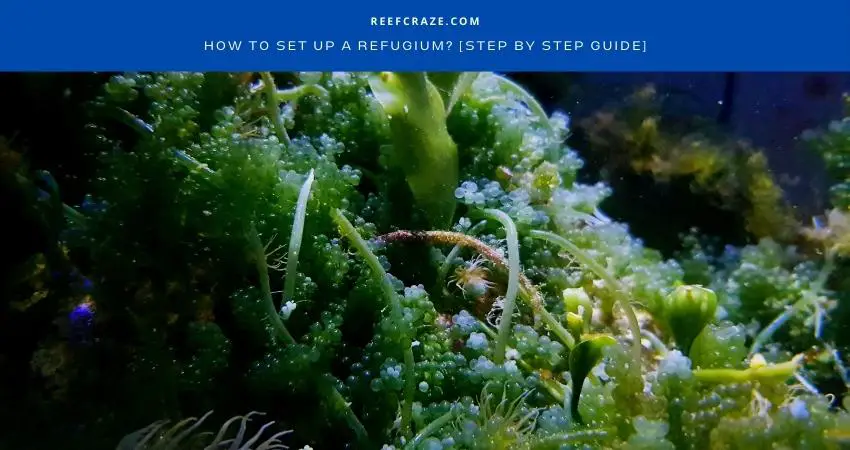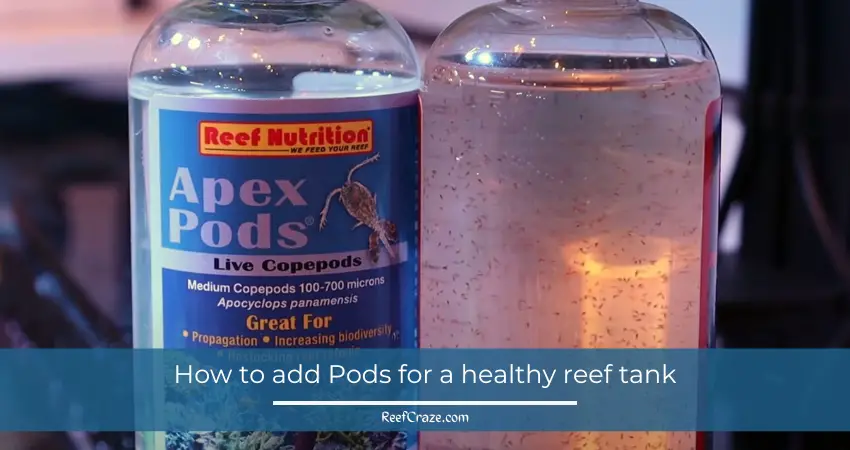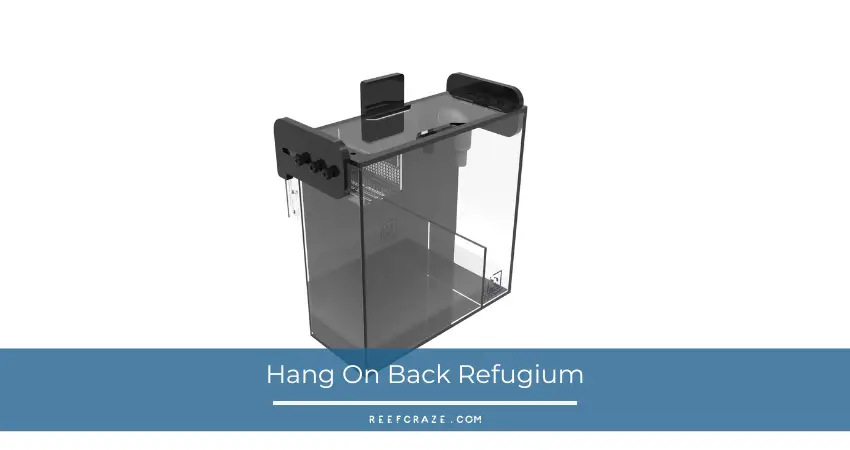Refugium has become a trending topic among hobbyist aquarists. However, it is nothing new as refugium has been around for longer than you think and benefits saltwater reef tanks in many ways. It can be convenient if you know how to set up a refugium.
First, find a place inside or outside your fish tank where you want to set up the refugium, based on its type. Then add the media and substrate, such as sand or mud, rocks, macroalgae, amphipods, or copepods, and pour in some phytoplankton. After that, let the new refugium environment settle before you turn on the return pump and turn on the light.
But the thing about refugium is that it takes much more consideration and tasks for a perfect and effective setup. In today’s article, I will tell you how I set up my reef tank refugium some time back. So, feel free to read the entire article and find the necessary answers.
What Is A Refugium, And How Does It Work?
If you are here to know how to set up a refugium, you already know most things about it, like what it is or how it works. But if you are a starter and want to know more about a refugium, this section is vital for you.
Simply put, a refugium is more like an extra but small tank part. This tank-like part gives refuge to a tank’s primary producers, such as algae, bacteria, and also its primary consumers like amphipods and other media. That is why it is called a refugium, as it helps these media and substrates grow and protect them.
Depending on the type of refugium, you can set it up inside, outside, or onto your reef tank. And while most people would say refugium is only for saltwater tanks, you can also use them for freshwater and coldwater fish tanks.
Since the refugium stays connected to the tank regardless of its location, the display tank or your main fish tank’s water goes back and forth between the tank and the refugium. It means the refugium’s contents and media experience the same water condition. This helps with the refugium’s overall work procedure and helps balance the nutrients and waste.
This procedure prevents algae from sticking to the display tank’s wall and suffocating the fish. Moreover, if you have any animals in the refugium tank, they will stay safe from the aggressive fishes and vice versa. You will learn more about their usefulness in the latter parts of this article.

How To Set Up A Refugium: 6 Steps
A refugium is a safe place for other things that are part of your main fish tank. So you need to know what you will put in there and how you set it up.
Based on the type of refugium you purchase, there will be a slight variation in the setup process. But in this step-by-step guide, I will tell you what you need to do when you prepare and set up the refugium, regarding its type.
Step 1: Turn Off The Return Pump
If it is not an in-tank model or a model you cannot place inside the aquarium, you will have to connect it to the aquarium and the return pipe after setting up the refugium chamber.
So make sure you remember to turn off the return pump of your display aquarium when setting it up. But if it is an in-tank refugium, you do not need to do any of these.
Step 2: Select The Spot
No matter which type of refugium you set up, you will still need to select a suitable spot to set it up. There are three different types of refugium, and you set each of them in different ways in your aquarium. I will discuss more about them in the following part of this article.
But for now, find a spot from where it will be easy to maintain the refugium. Make sure to place the refugium after the skimmer and filter socks.
Step 3: Add Substrate
Choosing the suitable substrate changes many things about a refugium and what else you have in there. While some people choose sand as a refugium substrate, others prefer mud because some plants and animals thrive in them.
One of the best parts here is that you can purchase a refugium mud substrate, which is prepared especially for a refugium. Though it is excellent for the lives, you add to the refugium, and it is not mandatory if you do not plan to add algae or animals.
The perk of having no sand or mud substrate is that you go through less trouble when cleaning the refugium. And if you want to add some hassle-free substrate, you can just add some tiny rocks.
Step 4: Add Microalgae
You cannot talk about refugium without talking about microalgae. This is one of the main essences you need to set up a refugium. Microalgae is highly beneficial in soaking up nutrients and other harmful residues to help balance the tank environment. Sometimes, fish even enjoy eating microalgae.
Chaetomorpha or chaeto (pronounced Key-toe) is the best kind of microalgae for the refugium. It grows faster, and you do not need to put much of it inside the refugium. But make sure to plant it under rock or mud so it would not come to the surface or get sucked in by the pump.
It is a great place for pods to inhabit and expand. Once the chaetos grow and seem to be filling the refugium, harvest a chunk of it to make enough room for new microalgae.
Step 5: Add Copepods or Amphipods
Many people would think adding life is pointless in a refugium. But as a part of aqua life, adding creatures contributes to the environment in various ways. So if you want that, you can add copepods or amphipods.

As the pods help remove waste and debris from the water, they can serve as a cleaning source for both the display tank and the refugium. You can feed the pods with phytoplankton by pouring it directly into the refugium.
Step 6: Adjust Flow And Add Light
The water should gently flow from and between the tank and the refugium. You wouldn’t want to keep the water flow too high as it will rush the water passing through the refugium. Besides, high water flow can wash sand and mud from the refugium and spread them through the display tank.
A refugium does not do anything if it does not have the right kind of light. Microalgae thrive when you provide the best light for them. Having separate light for the refugium helps it have a light source when the display tank’s light is turned off.
Types Of Refugium
Just as there are many types of fish tanks, there are varieties in tank refugium. And you should consider the type of refugium you want before preparing for anything else. Why?
Because the type of refugium you choose will affect your display tank appearance and environment. If you have a smaller tank, having a refugium inside will only narrow its space. So here are the types of refugium I have listed to help determine which is more suitable for you and your fish tank.
In-Tank Refugium
One of the common refugium types you will see is the in-tank refugium. It does not require any water pump as you place it inside the fish tank. Such refugium comes with suction cups that keep it stuck to the aquarium’s inner wall without moving.
You do not need to do much to set up this tank. After placing it inside the tank, you only need to add the essential substrate and media and adjust the light. An in-tank refugium is like a small open space. So when placing the stones and other media, you need to make sure they are set right so that they won’t suffocate the animals in there.
Hang-On Refugium
If your fish tank does not have enough room to house a refugium, you can get a hang-on-the-back refugium. Such a refugium requires hanging the aquarium’s side or the back, depending on how you want it.

The pump part of the refugium goes inside the tank, helping pump water back and forth between the tank and the refugium. Setting up the hang-on refugium is also pretty straightforward. But you need to make sure that your fish tank is in good condition to handle a refugium that hangs onto it.
Integrated Refugium
The integrated refugium is partially in-tank refugium, yet they work differently and have a different construction. However, they are highly recommended if you want all your aquarium parts and equipment in one place and under the fish tank.
While some of this refugium comes with a single compartment where you put everything, others come with separate chambers for algae and stones. Some models even offer spaces for placing the filter socks, protein skimmer, and other items.
You will also find aquariums that have space for refugium under their filter compartments. To set this up, you only need to connect the refugium to your display tank, add the return pump, and finally, an LED light.
Why Should You Set Up A Refugium?
Adding a refugium to your aquarium system certainly comes with some advantages, Here is why you would want to have a refugium.
1. Increases Water Volume
Since the refugium is another chamber to have tank water, it adds more room for tank animals to breathe. Besides, adding a refugium increases the tank’s water volume, and it doesn’t matter whether the refugium system is new or full-grown.
2. Controls Nutrients
Refugium has plants, including microalgae or chaeto. They are known for being highly effective in controlling water nutrients by soaking them into their cells as they keep growing.
3. Balances pH Level
Light plays a vital role in the refugium system. Having the right light set up with the refugium not just boosts algae growth. It also helps cause a chemical reaction that keeps the display tank water’s pH level in check.
4. Increases Food Supply
As microalgae and pods thrive in a refugium, they create a natural food source for the tank fishes. So the refugium works as a food source for the fish. Moreover, the pods traveling from the refugium to the display tank increase their biological activities.
Common Refugium Setup Mistakes
Making mistakes when purchasing, setting up, or even maintaining a refugium is not unusual or uncommon. But you would want an aquarium with a well-set refugium to ensure the tank environment remains safe and healthy.
That is why it is essential to know what not to do when purchasing and setting up a refugium. From my experience, here are some of the common refugium setup mistakes I have seen people doing. Some of them are from my personal experience as well.
1. Bigger Is Not Always Better
As a beginner with a minimal idea about refugium, my primary thought was that I needed a refugium big enough to be compatible with my tank. That was one of my first mistakes and assumptions.
Turns out it is unnecessary to have a bigger refugium simply because you own a larger fish tank. Besides, modern refugium ensures the tank environment remains healthy, and the aqua life can thrive without requiring too much.
2. Getting Chaetos From Someone Else’s Tank
It is a big no-no because getting chaetos or microalgae from someone else’s tank is not safe for your aquarium. You never know if their tank environment is healthy or safe enough, whether there are waste, worms, or other things latched to it. So it is better and safer if you do not take chaeto from someone else’s tank.
3. Not Adding Or Harvesting Enough Chaeto
If you do not add enough chaeto, they will not reach the surface and remain inside the refugium like a clamp. It will prevent the chaeto from growing and balance the number of nutrients in the water. And if you do not harvest them on time, they will not leave enough space for new microalgae to grow and suffocate everything underneath the refugium.
4. Placing Filter Socks After The Refugium
You should always remember that the filter socks and the protein skimmers always go before the refugium, not after. The socks ensure cleanliness by gathering food waste, fish poop, and other wastes from the water. If you place the filter socks after the refugium, all this waste will gather inside the refugium, and you will have to go through an extra hassle to clean them.
How To Maintain A Refugium?
Maintaining a refugium takes less effort than you think. Since you have set up everything, the rest of the things will keep taking place naturally and on their own. You are to clean up your tank, filter, and other display tank equipment from time to time. And the refugium will not require any extra hassle.
Since there are algae and plants, they will keep growing over time. You must harvest some of them when they grow too big or seem to cover the refugium chamber. It is essential to remove them because as the algae begin to die, they release nutrients from their cells.
So as you harvest the algae, you remove the harmful nutrients from the water. Besides, removing the excessively growing algae leaves enough space for new microalgae to grow.
Here is a bonus tip for you. When harvesting algae, take a fistful of them and gently shake it in your tank water. Doing this will release beneficial organisms and pods into the water. Your aquarium fish can also feed on these.
Additional Read: How to clean a refugium
Frequently Asked Questions
Should a refugium be before or after the skimmer?
What kind of light do I need for a refugium?
How long should I run a refugium light?
Is it necessary to put sand in the refugium?
Final Words
With a refugium, having a saltwater tank becomes more manageable. A refugium improves the tank environment by improving the water quality, pH level, increasing beneficial bacteria, etc. In short, a refugium brings a new change to a tank’s ecosystem.
And the best part is that you can have them without worrying about hard and fast maintenance. So now that you know how to set up a refugium, you can get ready to provide your display tank and tank inhabitants with something new and better.
